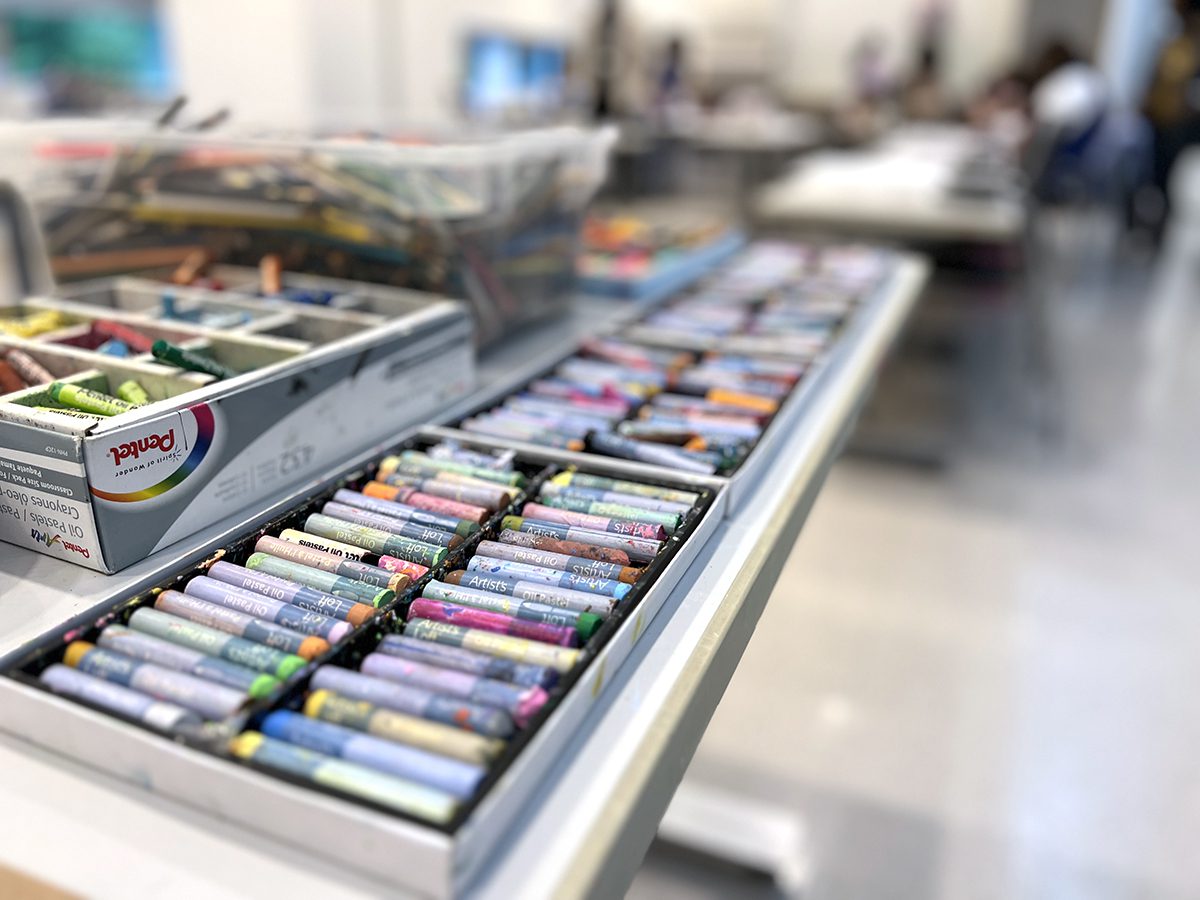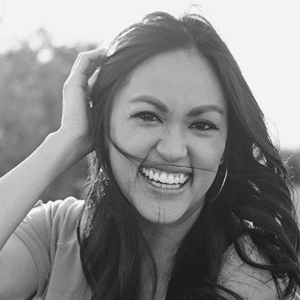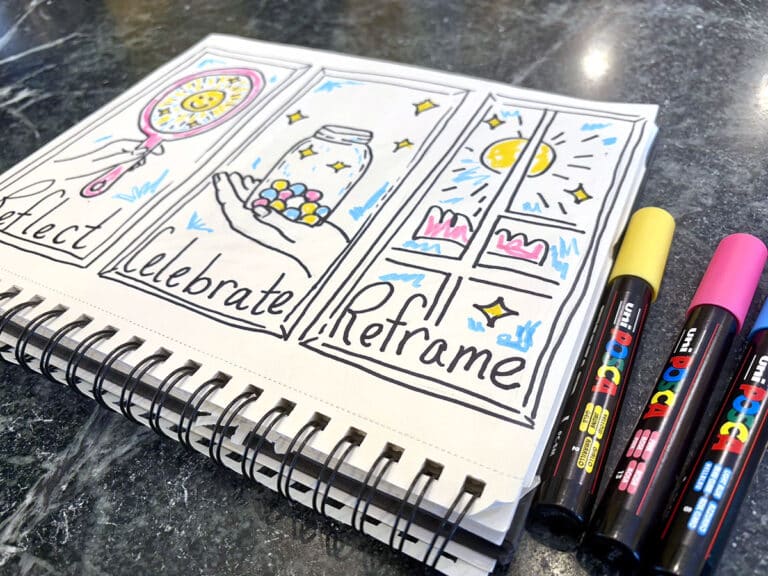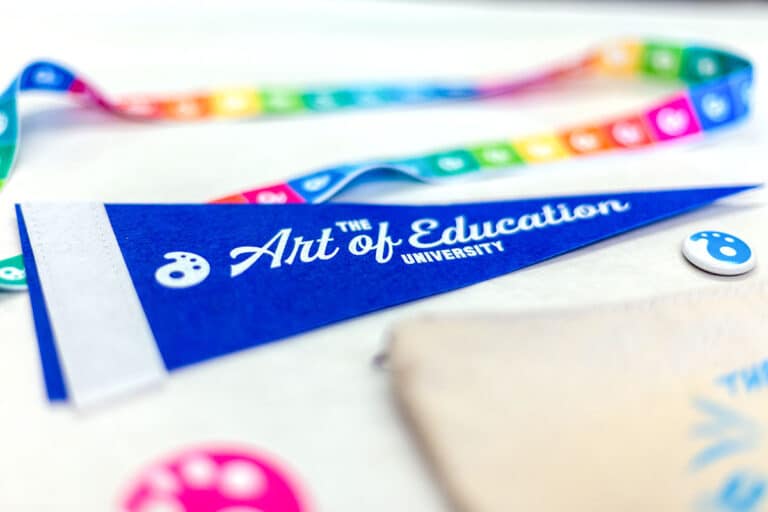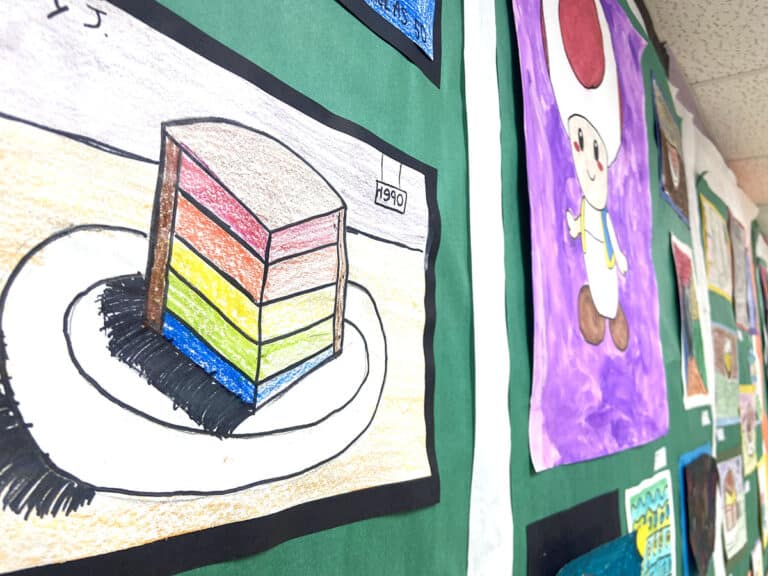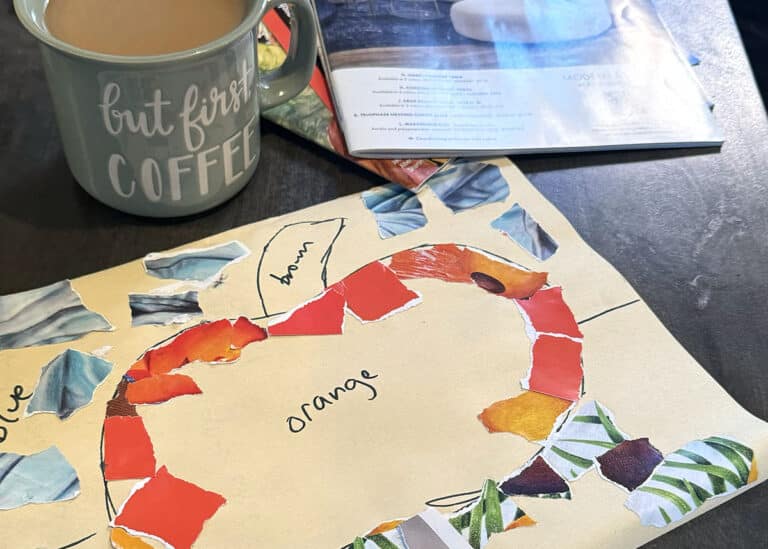As summer winds down and back-to-school season approaches, the itch begins to start planning for the new school year. We all know planning is a good idea, but where do we begin? Planning for back to school isn’t only about hanging posters on the walls. It’s also about preparing our minds, refining our curriculums, and enriching our learning through professional development! Whether you’re back in your classroom for another year or new to art education, organize and refresh your back-to-school plan so you’re full of art teacher energy on day one!
If you’re excited to plan for back-to-school, keep reading for four steps to prepare your art room, curriculum, and professional development for a successful year.
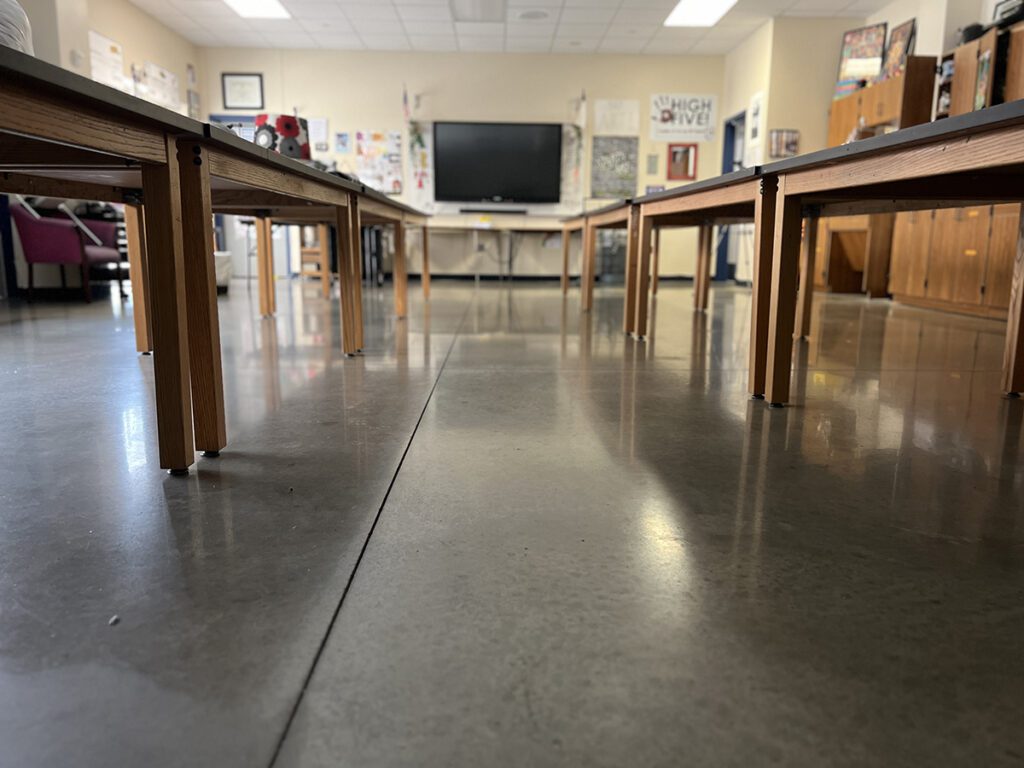
1. Reflect and set goals for the year.
Preparing for the school year is easy with a solid plan. After all, “If you fail to plan, you are planning to fail.” Whether you are a new art teacher, a general education teacher switching to the art room, or a seasoned art educator, taking time to reflect and set goals is crucial for a successful year. Reflecting upon previous experiences allows you to assess what worked before and identify areas for improvement moving forward.
Here are some questions to consider as you reflect and set goals:
- What worked well with my classroom setup? How can I rearrange things to improve student engagement and collaboration?
- Which lessons were student favorites? What made them so successful?
- Which projects or activities flopped? How can I tweak them to make them smoother?
- Research your student demographics and remember last year’s rosters. Brainstorm ways to approach the curriculum with an inclusive lens to meet student needs.
- Consider any behavioral issues faced. How can I take a more proactive approach?
- Pinpoint some areas where I felt challenged. What specific resources or professional development can I seek out?
If you’re brand new to teaching art, use previous experiences as a student or from student teaching to reflect and set goals:
- What is one classroom environment that encouraged creativity and learning? What are some ideas I can incorporate into my classroom?
- What was a memorable art lesson that everyone was excited about? What strategies can I apply?
- Think about one teacher who fostered a welcoming and supportive space. How can I cultivate that same feeling in my art room?
- Where do I feel most confident as an art educator? How can I harness this strength?
- What parts of teaching are still intimidating? What specific resources or support systems can I seek out?
Once you’ve reflected on your past experiences, create specific and achievable goals. Goal setting allows you to review measurable changes in your teaching practice and classroom. Start simple with one or two goals. Mark your planner at the end of each quarter to check in, assess, and reflect!
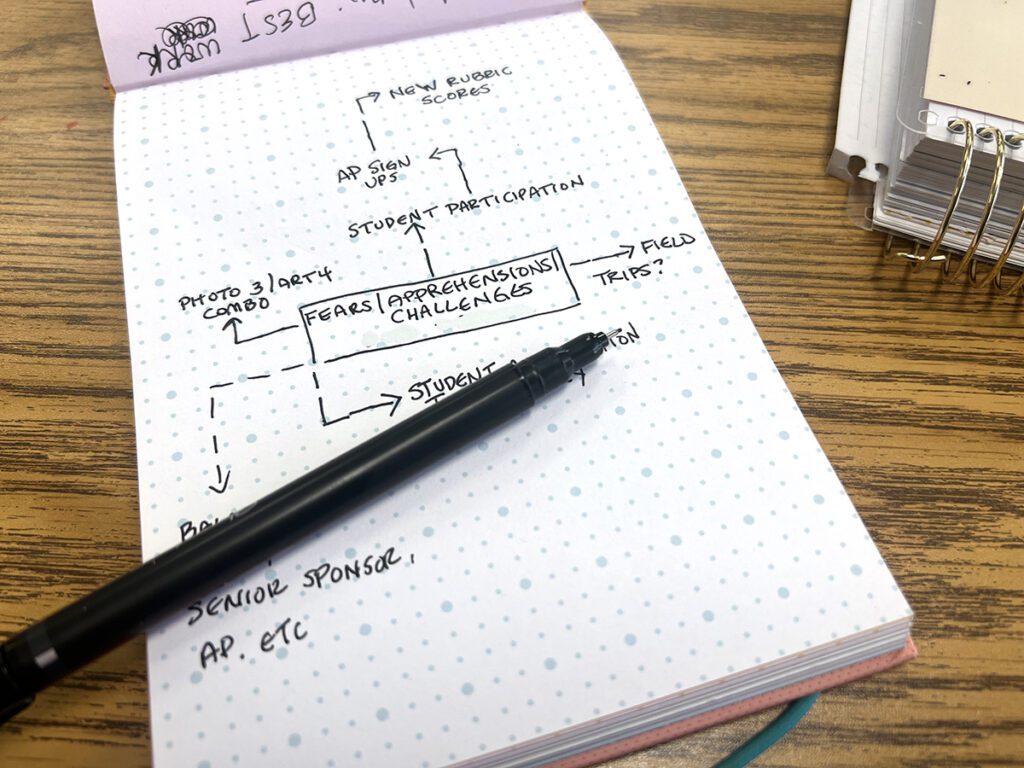
2. Set up your art room for efficient systems and routines.
Setting up your art room or cart is one of the more exciting tasks to prep for a new year. However, this can also be daunting if you are new to teaching, moving rooms, or transitioning to become a traveling art teacher. If you are feeling overwhelmed, take a breath! We have many resources for you to organize your space so your students can create magic.
Ask questions like the ones below to help you decide what systems and routines to focus on this year:
- Where will students use each major material or medium?
- What is my system for distributing and collecting art supplies?
- Where will I display completed student artwork?
- Where will I store wet and dry in-progress work?
- How do I want students to move through the room?
Watch these three YouTube mini-series to find answers to your specific art room needs:
- Equip yourself with tips and tricks to add to your classroom management toolkit in Run the Art Room. Learn new ideas for how to enter and exit the classroom, prep art materials, and distribute and collect supplies.
- Discover how to bring order to your art room with Artfully Organized. This series addresses the unique challenges and complexities of the art room and includes tips to tackle labeling, table caddies, learning target walls, and more.
- Explore fresh ideas to spruce up your art room in Art Room Makeover. Gain budget-friendly art room DIYs, decluttering and cleaning motivation, and bulletin board ideas.
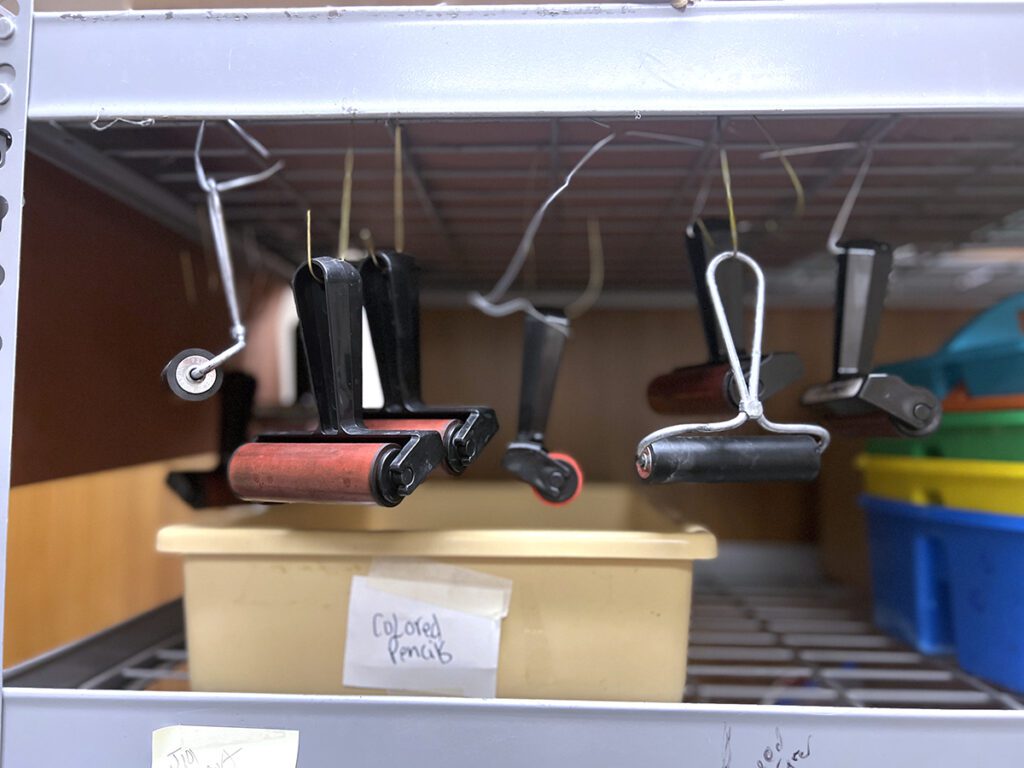
3. Refresh and refine your curriculum and lesson plans.
You may have a curriculum to follow that you’d like to make your own this year. Maybe you perfected your scope and sequence but are looking for new twists and artists to keep things fresh. Perhaps you have nothing and have no clue where to even begin! No matter your lesson plan situation, FLEX Curriculum is here to help you cultivate a year of growth.
FLEX Curriculum is the ultimate K-12 Visual Arts curriculum with scope and sequences for each grade level, standards-aligned lesson plans, and student-facing resources and assessments. Everything is ready-to-go for the classroom and is flexible to fit your students’ specific needs.
While there are many updates to all grade-level content in FLEX, there are exciting new changes specifically for high school art teachers:
- Check out four new advanced drawing lessons about figure drawing, digital drawing, and more.
- Download 40 new student-facing drawing resources.
- Browse 126 updated lesson plans with fresh essential questions, differentiation tips, and linked videos.
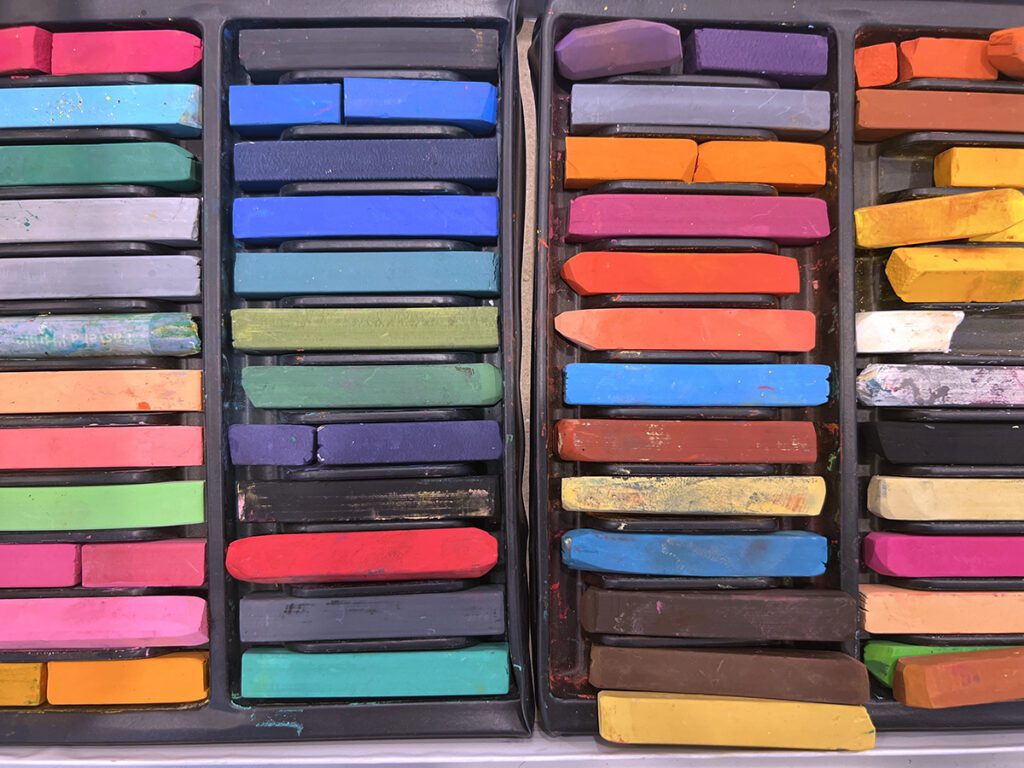
4. Tap into lifelong learning through inspiring professional development.
This is your year to nurture your growth as an art teacher as well! Professional development is a way to introduce new teaching methods, stay up-to-date on current trends and practices, gain innovative lesson ideas, learn fresh art techniques, and network with like-minded educators. If you wait until you have extra time or resources to dig into PD, your PD will likely not happen! It’s key to have a plan you can simply execute when things get busy.
Come up with a professional development plan to prioritize your growth and invest in your teaching career. Crafting your own PD plan instead of or in addition to general district PD will accelerate your learning—you’ll be able to customize goals to build on your strengths and pinpoint areas for growth.
If you’re looking for art education-specific PD created for art teachers, by art teachers, you’re in the right place! PRO Learning is an on-demand professional development with more than 200 Packs of teacher-facing videos and resources. Within PRO, there are several guides to help you craft your own PD plan. There are also several curated playlists to make your planning a breeze.
Here are our favorite PRO Packs for back-to-school:
- Organizing the Art Room for Choice
- Getting Started Teaching Art on a Cart
- Organizing Your Elementary Art Room for Success
If you want to harness ready-made curriculum and professional development resources this year, reach out to discover how to get your district to fund FLEX and PRO.
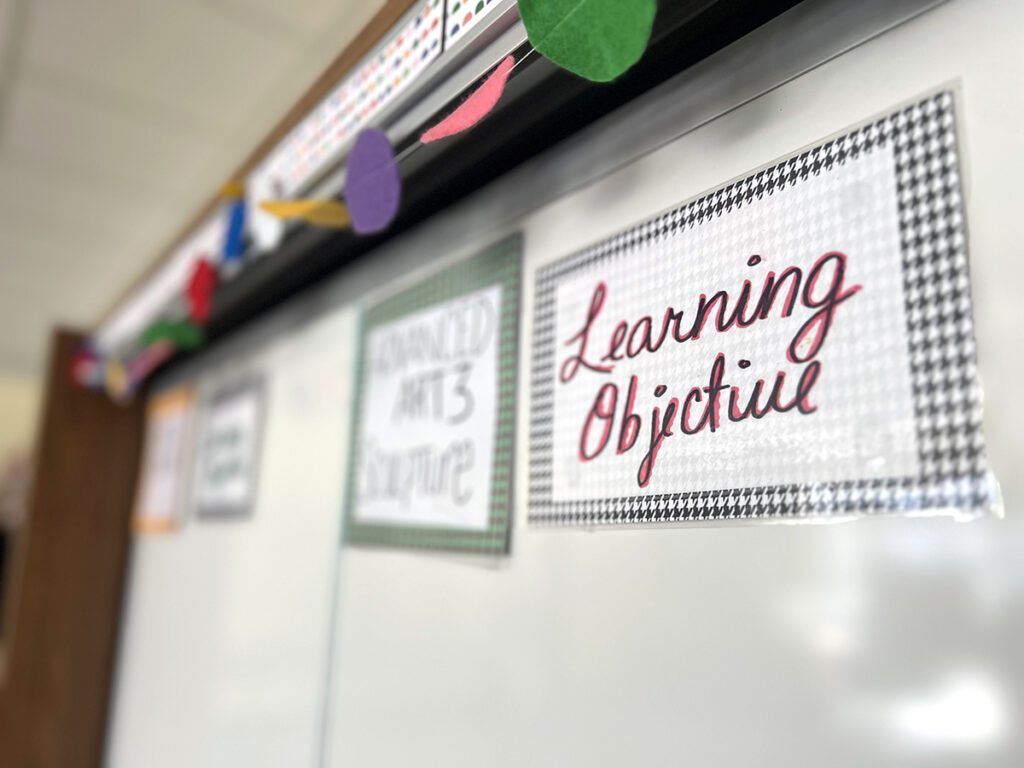
Starting a new school year is an invigorating time filled with mixed emotions and a very long to-do list. Take the intimidation out of the equation with the four tips above. Just like in artmaking, set aside time to ideate your year. Set goals for the new school year so you can have a confident start and guaranteed growth. Consider your art room space so you and your students can focus on artmaking. Explore how FLEX Curriculum and PRO Learning can streamline your planning and cultivate artistic and professional growth. With a little intentional planning, you got this school year!
Don’t miss these two articles packed with valuable back-to-school downloads:
- The 8 Best Downloads for Art Teachers to Stand Out This Year
- Colorful Conversations: 9 Fantastic Resources to Enhance Communication in Your Art Room
Where are you in the back-to-school planning process?
Identify one next step you will take this week so you can start the year with intention!
Magazine articles and podcasts are opinions of professional education contributors and do not necessarily represent the position of the Art of Education University (AOEU) or its academic offerings. Contributors use terms in the way they are most often talked about in the scope of their educational experiences.
